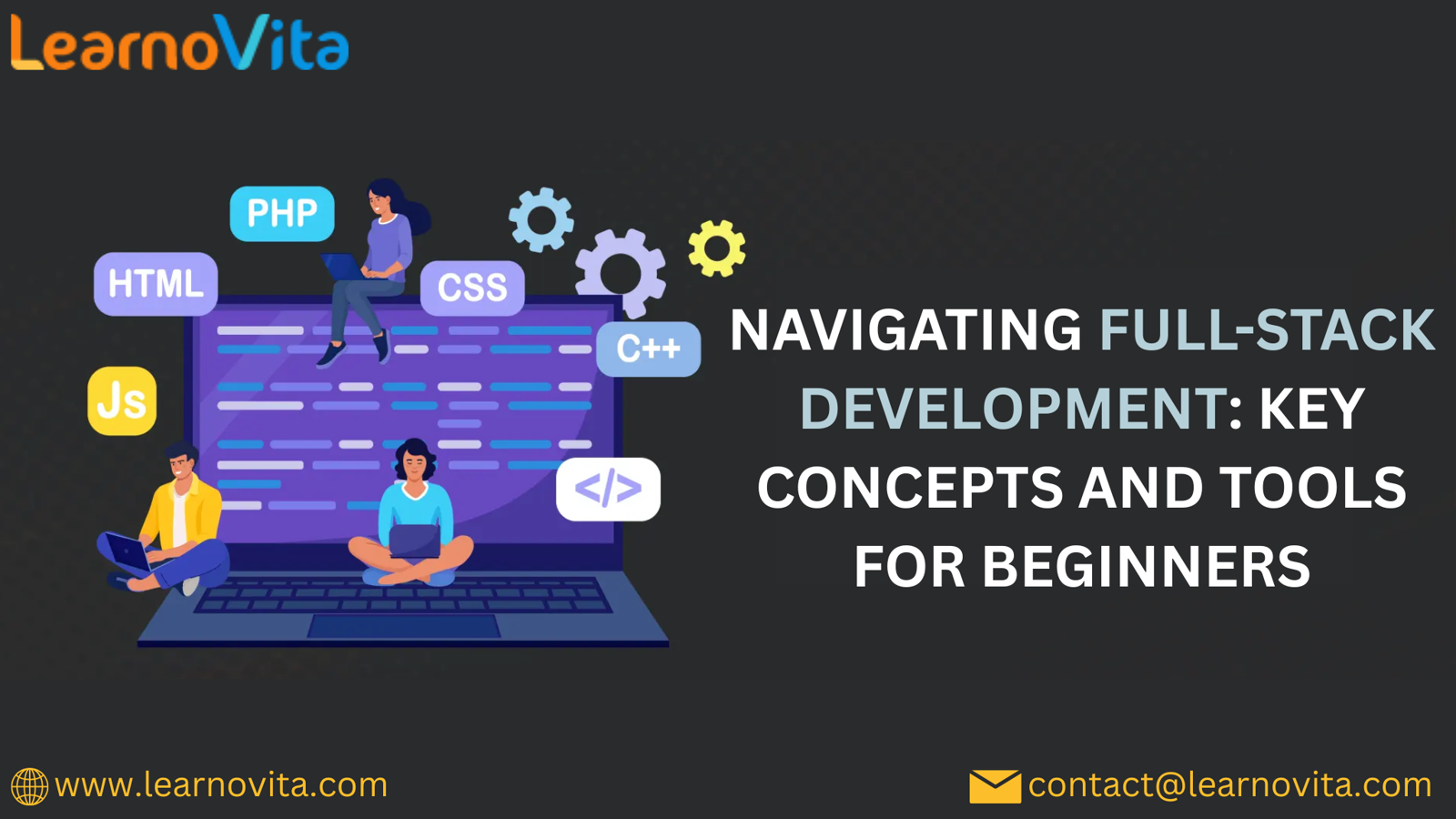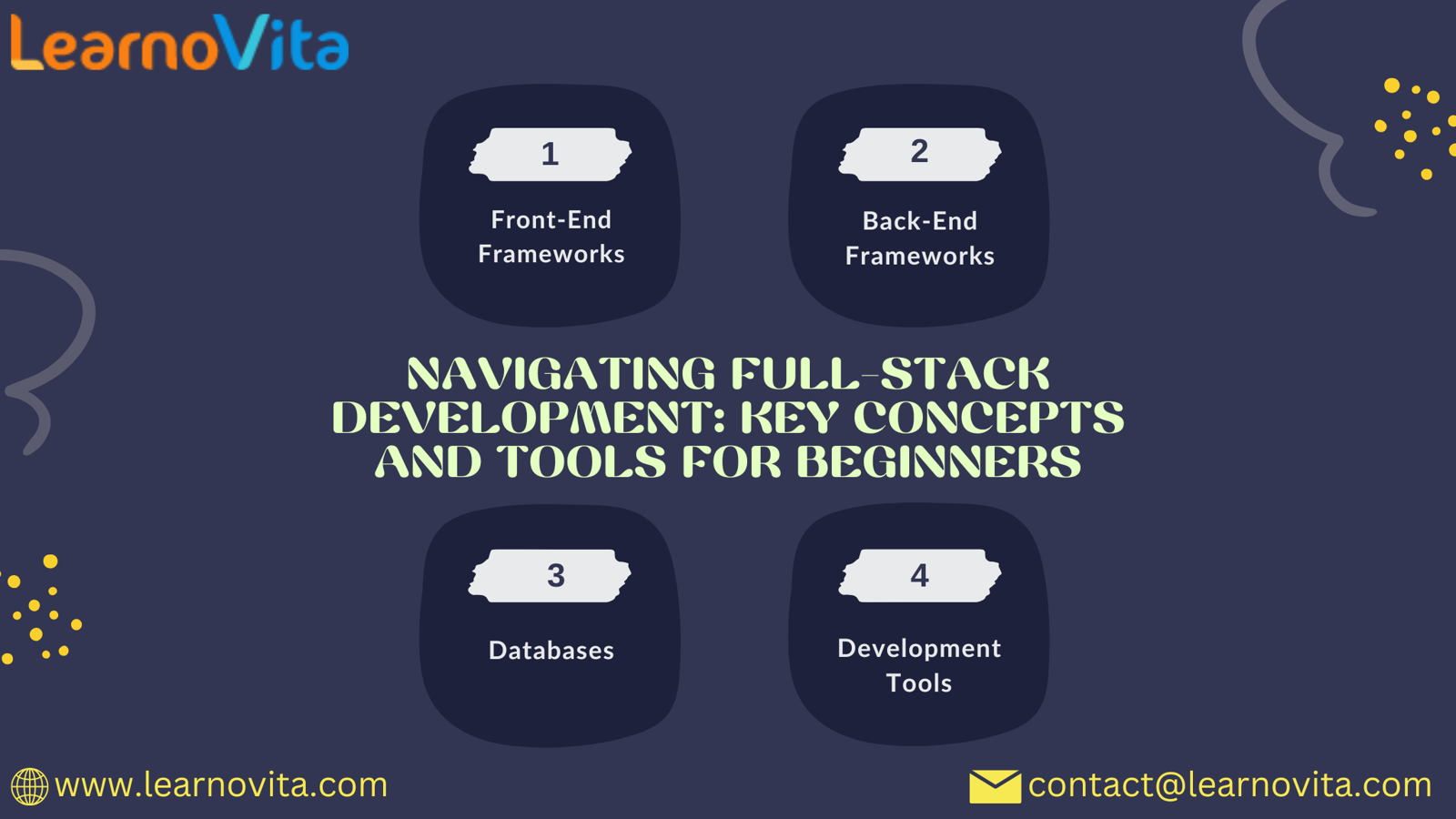A Beginner’s Guide to Full-Stack Development: Essential Concepts and Tools

Understanding Full-Stack Development
1. Front-End Development
The front-end is what users see and interact with directly. Key technologies involved include:
- HTML (HyperText Markup Language): The foundational language for structuring web content and web pages.
- CSS (Cascading Style Sheets): Handles the visual presentation, styling, and layout of web pages.
- JavaScript: This programming language enriches user interactivity and allows dynamic content updates.
To enhance JavaScript functionality, developers often utilize frameworks such as React, Angular, and Vue.js.
2. Back-End Development
The back-end deals with the server side of web applications, managing data and application logic. Key components include:
- Server: The hosting environment where the application runs. Common technologies include Node.js, Django, and Ruby on Rails.
- Database: Responsible for storing data. Popular choices are MySQL, PostgreSQL, and MongoDB.
- Server-Side Languages: Languages such as JavaScript (using Node.js), Python (with Django or Flask), Ruby (with Ruby on Rails), and PHP are commonly employed for back-end tasks.
It's essential to know how to connect and manage databases through an API (Application Programming Interface).
3. Version Control Systems
Version control tools like Git are crucial for tracking code changes. They facilitate collaboration, manage different project versions, and allow quick recovery from errors. Platforms like GitHub and GitLab enhance collaborative efforts.
4. RESTful APIs

Essential Tools and Frameworks
Front-End Frameworks
-
React: A JavaScript library created by Facebook for efficient UI development, known for its reusable components and suitability for single-page applications (SPAs).
-
Angular: A powerful framework developed by Google, perfect for creating dynamic web applications with its extensive templating and dependency injection features.
-
Vue.js: A flexible and progressive framework that integrates easily into existing projects, ideal for enhancing user interfaces.
Back-End Frameworks
-
Express.js: A minimalistic framework for Node.js, perfect for building RESTful APIs and web applications.
-
Django: A high-level Python framework designed for rapid development with built-in features such as ORM and authentication.
-
Ruby on Rails: A robust full-stack framework for Ruby known for its simplicity and speed, following the convention over configuration paradigm.
Databases
- MySQL: A popular open-source relational database management system that maintains data integrity and supports complex queries.
- PostgreSQL: An advanced relational database known for its reliability and support for complex data types.
- MongoDB: A NoSQL database designed to store unstructured data in a flexible format, ideal for extensive datasets.
Development Tools
- Code Editors: Utilize tools like Visual Studio Code, Sublime Text, or Atom for a user-friendly coding experience.
- Package Managers: Tools such as npm (Node Package Manager) and Yarn help manage and install project dependencies efficiently.
- Postman: An excellent tool for testing APIs, simplifying the process of sending requests and analyzing responses.
Conclusion
Starting your journey in full-stack development can be both thrilling and daunting. By familiarizing yourself with fundamental concepts—covering both front-end and back-end development, version control, and RESTful APIs—you’ll lay a solid foundation for your skills. Coupling this knowledge with essential tools and frameworks will equip you to transform your web application ideas into reality. Begin your learning journey today and unlock the world of full-stack development.

Comments
Post a Comment